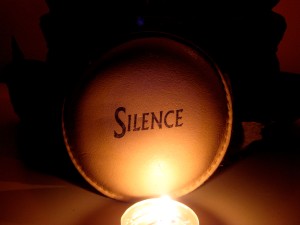“Digestion begins in the mouth! Digestion begins in the mouth! Digestion begins in the mouth!”
That was Jan’s 5 am recapitulation of a third grade memorization at St. Mary’s, sixty children loudly responding to the question from their teacher-nun, “Where does digestion begin?”
What prompted this discussion was an effort we’ve been making to memorize an affirmation that Robert Monroe had formulated for safe out-of-body travel. It’s been a long time since either of us has taken up the task of memorization! Of course, shortly after that discussion we encountered that affirmation again in our morning reading. A specific portion of it was cited as being essential for out-of-body practitioners to enter a whole new dimension of exploration!

– Photo by Jan Ketchel
Simultaneously, I was drawn back to Swami Vishnudevananda’s classic book, The Illustrated Book of Yoga, where I remembered having read about the very specific relationship between the breath and the mind. In a nutshell, I’ve come to the distilled proof: You can’t breathe and think at the same time!
Obviously, this “proof” is not completely true. We don’t completely cut off respiration when we think, but concentrated thinking does significantly slow, and sometimes halt, respiration for significant periods of time.
This proof can easily be tested. Take a moment and purposely and intensively focus your attention on any sound in your environment. Notice what happens to your breathing as you do so. My experience is that my breathing slows down or pauses as I concentrate on the sound.
The same relationship with our breath holds true when our mind becomes attached and preoccupied with a thought; breathing slows down or is halted for a period of time. Therefore, if you want to shift yourself away from a burgeoning thought fixation, turn your attention to breathing. Take in a slow deep breath. Do several of these slow deep breaths and you will break the fixation of the mind on its thoughts and feel revitalized within your physical body in the bargain!
As I see it, the mind is a separate body from the physical body. The mind, or mental body, actually resides in the energy body, a body separate and distinct from the physical body. When people say they have been out-of-body during waking life, off daydreaming perhaps, it generally means that their mind, or mental body, had scooted away from the physical body and gone off with the vital energy the body takes in when we breathe, what the yogis call prana. While the mind concentrates, consciously or unconsciously, on its thoughts, the body is shortchanged of its normal intake of oxygen, diminishing the vital energy of life as it is completely monopolized by the mind.
The body is often rigid, constricted, tense and immobile during intense preoccupation with thought. If the body is simultaneously in motion, it operates like a plane without a pilot, subject to collision and injury, much like the Absentminded Professor!
Actually, the mind does often utilize the physical brain when it thinks, which is why overthinking generally causes overheated brain circuits and headaches. The mind does not need the brain to function as is evident in out-of-body exploration when the energy body journeys beyond the body and uses the mind quite naturally to navigate its course. However, we can be in the physical body using the mind/brain connection and still be cut off from, or beyond connection with, the physical body.

– Photo by Jan Ketchel
When the mind is intentionally directed to the breath, however, the prana or life energy it has monopolized is dispersed throughout the body, in each conscious breath, reducing the anxious concentration of energy in the mental body, a frequent generator of high anxiety. So, as is highly recommended for all cases of anxiety, breathe and become calm!
And so, taking a tip from Jan’s childhood memory: Calmness begins in the breath! Calmness begins in the breath! Calmness begins in the breath! Perhaps the nuns of St. Mary’s might give that chant their stamp of approval!
Deeply breathing,
Chuck
